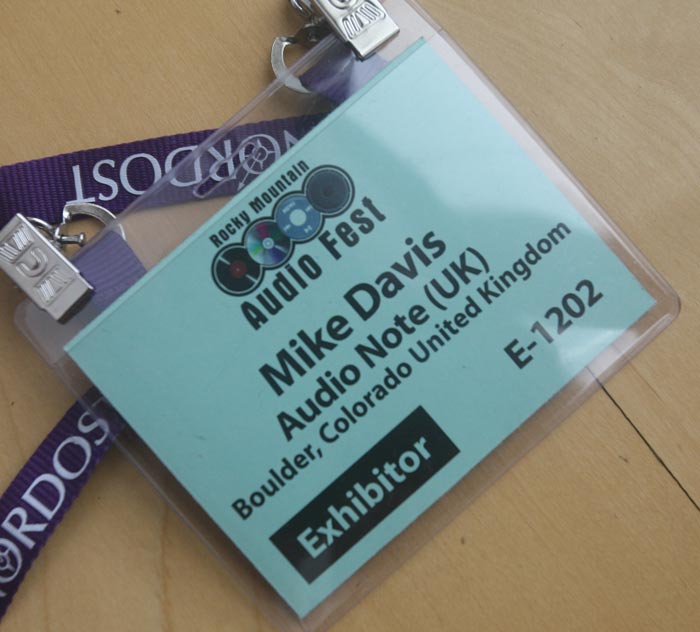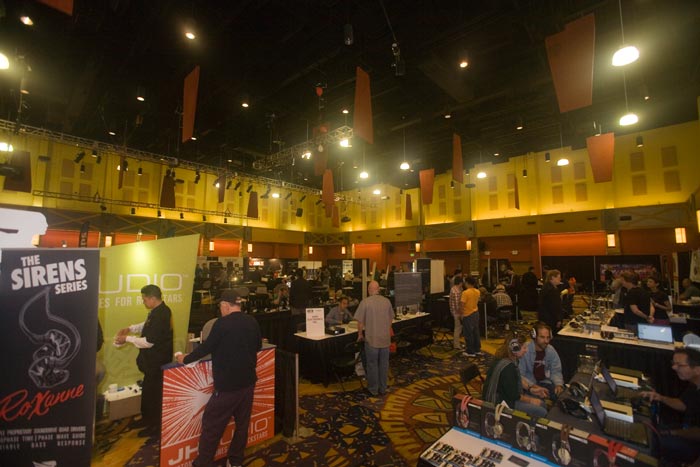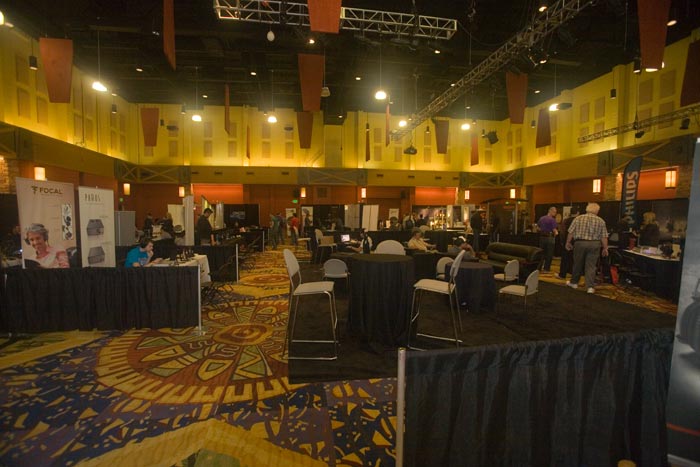
My badge for the show. Was kind of incognito. Nice.
Well folks, it looks like we are going to do two show reports.
The show report on Ultimist will have all the photos [about a 1000], and we’ll talk about everything but the sound. A lot of fun things happen at a show. Many things that are really not at all related to the process of listening closely and determining the quality of the reproduction of the music being played.
The show report here on the blog will talk about the sound, focusing mainly on the rooms that we liked. It will be relatively short. There wasn’t much that was really high-end, or even pretended to be really high-end.
In fact, a lot of it was old-school, and sounded like early 90’s stereo systems. We just hope people went to other rooms besides these and heard how there have been advances in the last decades – mostly in not sounding not quite so fake and artificial.
We will also talk here about the industry and various trends.
Heck, might as well talk about them now since I am thinking about it now and who knows where the brain will stash this stuff over the next few days as we move away from ‘Show’ mode and on to normal life.
Trends
Predatory dealers – These are dealers that exhibit at shows far away from their store, attempting to steal audiophiles away from the local dealerships. There just used to be one or two, and now there are at least 5 or so. Manufacturers are increasingly looking the other way when it comes to geographical restrictions. It is a free-for-all out there, but luckily for us, we are pretty safe being one of the very few who actually care about what things actually, you know, sound like. Most dealers are just box pushers and having remote dealers come into their territory at shows like this is going to cause one heck of a fuss.
Pricing is getting weird – hard to put my finger on exactly what is going on, but I am frequently shocked at how much or how little various pieces of gear are being priced at. This is not sticker shock but audaciousness. Again, at both the high and low ends. It is like target marketing segment and/or target demographics determine prices now, not performance and the relative price of competing gear.
CD Players are disappearing – I’ll have to double check the photos, but there is the requisite turntable for rooms who care about sound, and a laptop / music server for those who care about selection and convenience, and sometimes, sometimes a CD player for those rooms that are willing to play people’s CDs they bring to the show.
Old fashioned bad sound – For those that just include a laptop and some of the more mainstream gear, it seems really easy to create a sound that is reminiscent of early 80s sound. Bright. Tinny. Artificial transients. Incorrect Timbre. It really was shocking how far the sound in some rooms has regressed.
Far fewer show goers this year – and I, for one [not being an exhibitor this year], liked it. Calmer. More focused listening. More couples. Fewer young people unfortunately. Most rooms had people in them most of the time [as subjectively calculated from my traversal of all the rooms] as opposed to the other extreme in previous years where the hallways and a few rooms, lemming fashion, would be quite crowded and some rooms would be completely empty. Why is this? Brand name penetration dilution due to the internet being a more level playing ground than magazine advertisements? Smarter audiophiles willing to look beyond the major brands? Audiophiles who had already heard the major brands at local dealers and want to see what else is out there? More fit audiophiles who are willing to walk a ways to see what else is happening? [I do think people are more fit this year, now that I think about it].
Fewer photographers / reporters – I saw Albert Porter [thanks Albert! He loaned me a memory card the first day] taking official photos for the show. And maybe one other photographer who looked serious [he seemed to be taking as many photos as I was. Although this year, I myself was keeping a handle on things]. I saw Mike Fremer, JA, Clement Perry, Larry Borden, Constantine Soo and JV, but few other reporters. Usually they are all over the place, and every other person I look at their badge and see they are from Positive Feedback, Enjoy the Music etc.
Lots of new / unknown gear out there – I see this all the time on the front page of Ultimist. New brand after new brand goes by. Some top gear. Some affordable gear. Some imported, some domestic. This year’s show had a number of new brands showing their stuff. This is a golden age for high-end audio – too bad the economy isn’t better.
We can’t think of too many more trends. Continuing reduction in of the major manufacturers [which gives the show a more homey, down-home feel, which I like. But fewer attempts are exceptional sound, unfortunately]. Perhaps a few more importers than last year. Neli mentioned that there was more heterogeneity / diversity of gear: very few brands had gear in more than two rooms.
OK. This is long enough.




